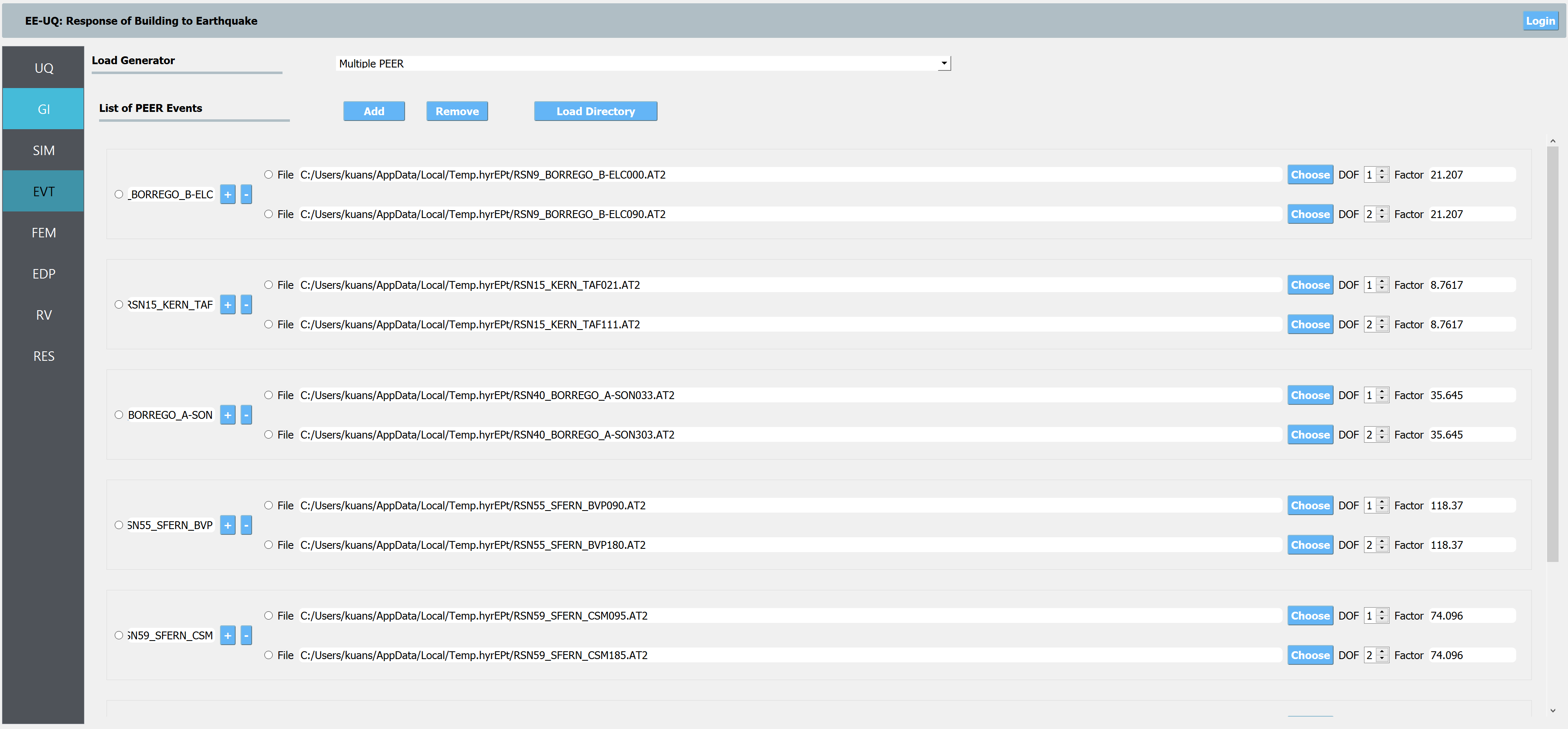2.4.3. Multiple PEER
This panel as shown in Fig. 2.4.3.1 is provided for the user to utilize multiple existing PEER ground motion acceleration files, .AT2 files, to create a set of PEER earthquake events. A number of buttons at the top Add, Remove, and Load Directory allow the user to add and remove these PEER events.

Fig. 2.4.3.1 Multiple PEER events.
The Add button is used to add an empty PEER event. For each PEER event, the user must input a name for the EVENT, a path to the AT2 file, a direction that the motion acts, and a scale factor. The + and - buttons within each PEER event allow the user to add or remove AT2 files so that motions can be provided in different directions. Each AT2 file should be specified to operate in a different direction. (DOF 1 and 2 correspond to the two horizontal directions of a ground motion recording).
The Remove button is used to remove events. To remove an event, the user must first select the events they wish to remove, which is done by clicking on the small circle at the left side of the event frame. All of the selected events are removed when the Remove button is pressed.
The Load Directory button provides a convenient method to load multiple events. All event files shall
first be placed into the same folder. We recommend putting the files in a folder of their own, with no other files besides the earthquake events in it. After pressing the Load Directory button, the user will be able to choose the directory that contains the files, and the application will load all event files (i.e., every file with a .json extension) into the widget automatically.
Initially, every event will be given a load factor of 1.0. Load factors can be assigned automatically by preparing a Records.txt file in the directory with the events. Each line in the Records.txt shall represent one event file, and contain two comma-separated values: the event file name and the desired scale factor. The application will open that file automatically and assign the prescribed load factors to the events. Using a Records.txt file also allows users to load only a subset of the events from a folder by listing only those in the file. An example Records.txt is shown below:
elCentro.AT2,1.5
Rinaldi228.AT2,2.0
Rinaldi318.AT2,2.0
Alternatively, users can load a ground motion package directly downloaded from PEER with its default information csv file (_SearchResults.csv). The ground motion information including event name, direction, and scaling factor is parsed.

Fig. 2.4.3.2 Load ground motions from _SearchResults.csv.
Note
Random Variables: Scale factors can be defined as being random variables by entering a string in the factor field. The variable name entered will appear as a Random Variable in the UQ tab and the user must specify its distribution there. If multiple events are specified, the event itself will also be treated as a random variable, with each event being part of the discrete set of possible events. For this discrete set, the user does not define a distribution as this is done automatically.